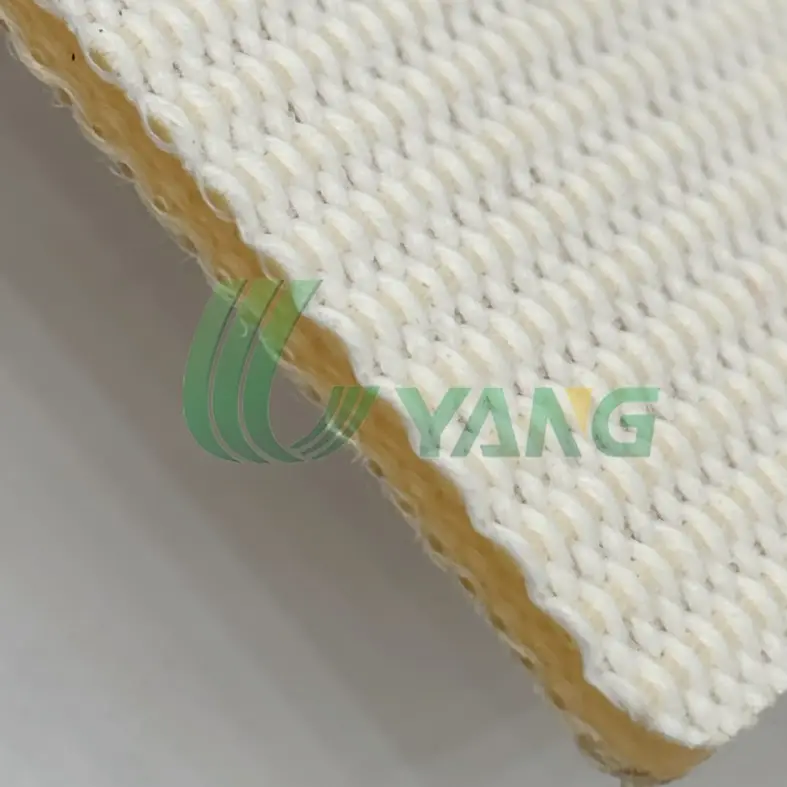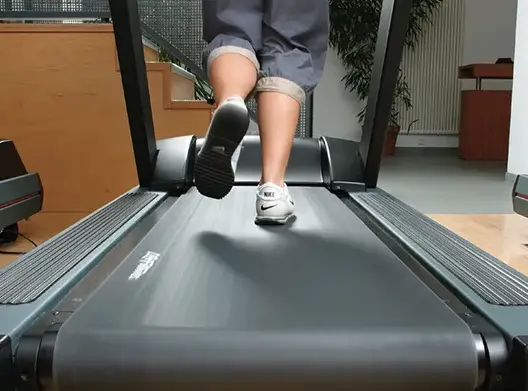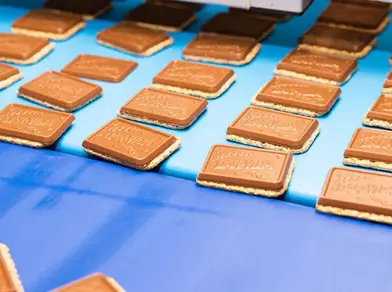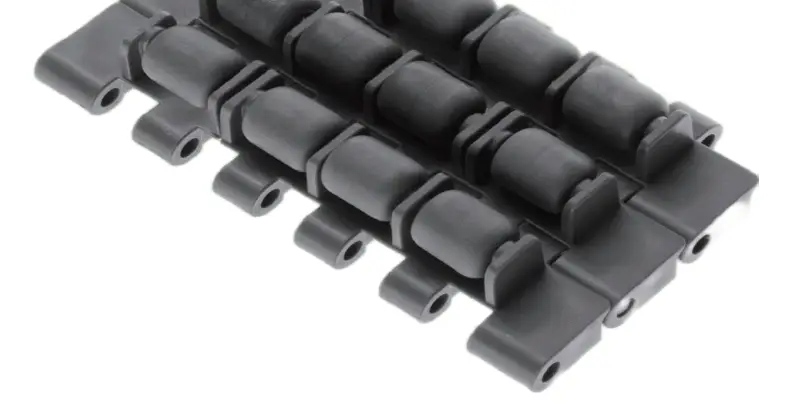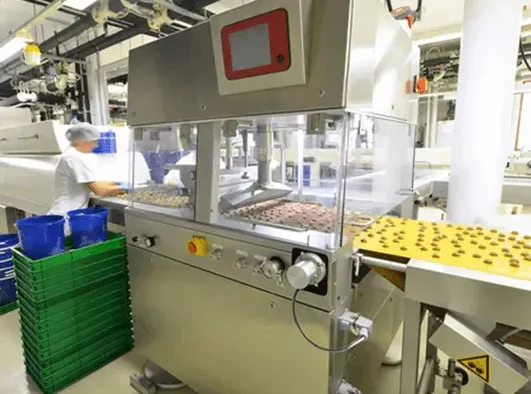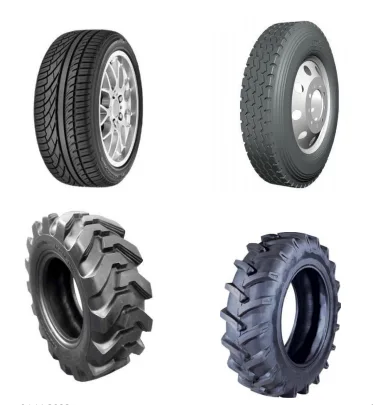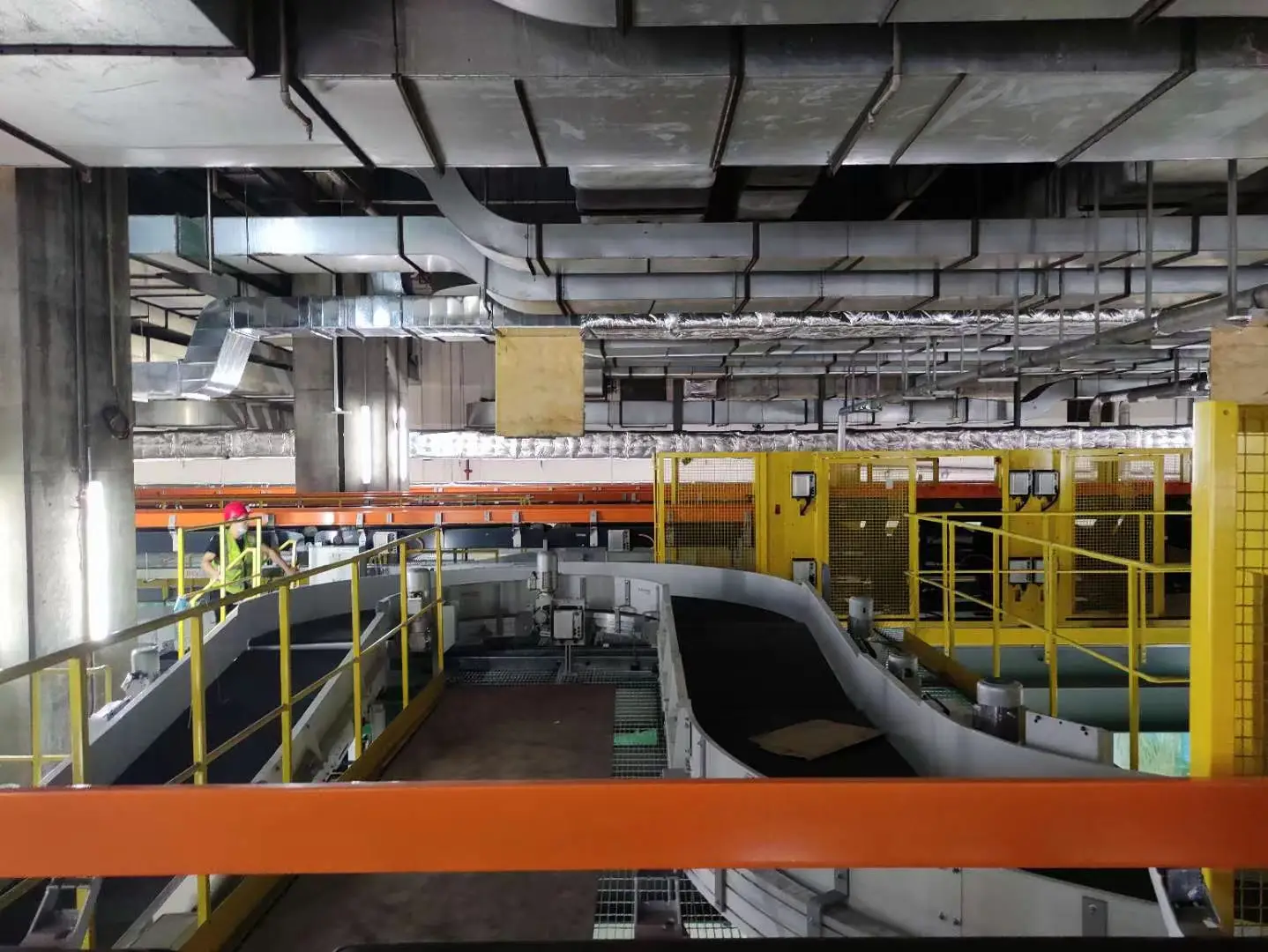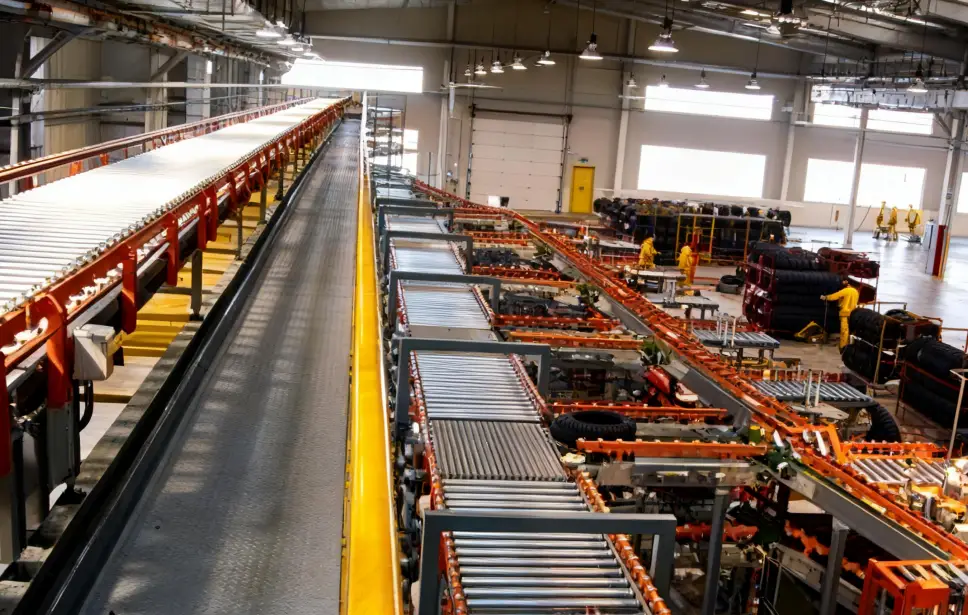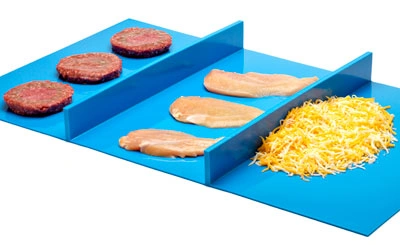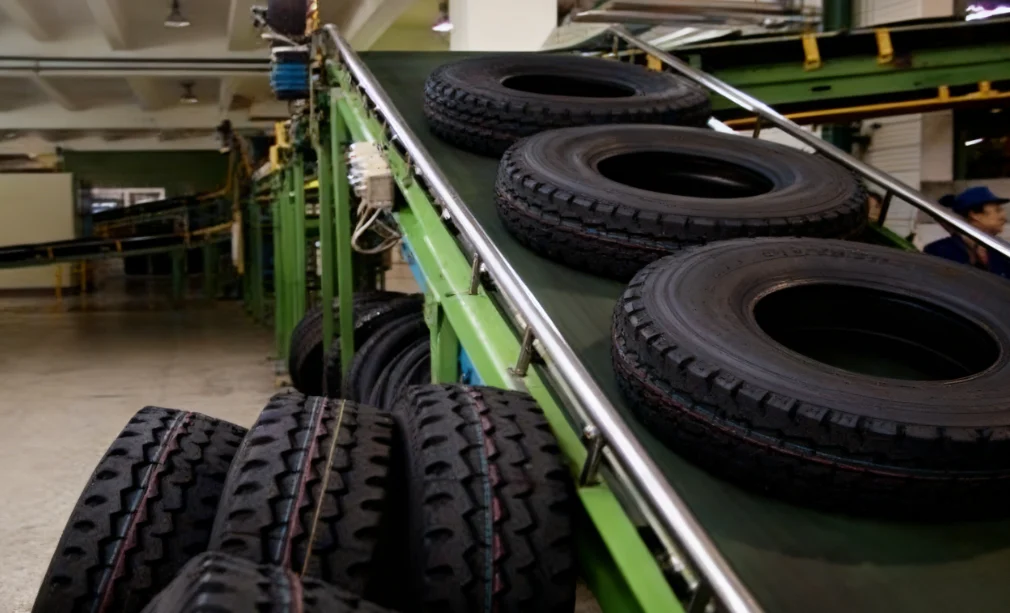Step into almost any food processing facility. You will feel the chill of the freezers and see water spraying everywhere during cleaning. Temperatures drop below minus twenty in some areas. Then, during washdowns, hot water and strong cleaners hit every corner. For most conveyor belts, this is a nightmare. They split, fray, or become so dirty that cleaning takes forever.
Choosing the right belt is not only about carrying food from one point to another. It is about hygiene, smooth production, and following strict food safety rules. A poor choice can mean downtime, higher costs, or even compliance problems.
So what makes a belt tough enough to handle both freezing tunnels and daily wash routines? Let’s go step by step.

Why Do Conveyor Belts Fail in Freezer and Washdown Conditions?
Material Breakdown from Harsh Temperatures
Most standard belts cannot deal with extreme changes in temperature. Imagine a belt running in a freezer at -18°C. Then, within minutes, it faces boiling water during cleaning. The sudden shift makes the material expand and shrink. Small cracks form, and later they grow larger. Food pieces and water get stuck inside these cracks. That weakens the belt and raises hygiene risks.
Bacterial Growth from Hard-to-Clean Surfaces
Belts with fabric inside often soak up water or oil. Once this happens, bacteria find places to grow. Over time, smells or stains appear. Many technicians can tell when a belt is contaminated just by the sour odor after a week. These hidden spots are dangerous in food plants.
High Maintenance and Short Belt Life
Some workers joke that belts are swapped out as often as aprons. Daily washing, scraping, and adjusting wear them down fast. The true cost is not just buying a new belt. It is also the lost production time while machines sit idle.
What Features Make a Conveyor Belt Suitable for Freezer Use?
Stable Shape in Cold and Wet Conditions
A freezer belt should stay stable whether inside a tunnel at minus degrees or near a steamy wash zone. Belts that shrink or stretch too much start to run off track. They rub against side frames, wearing out faster and wasting product.
Strong Against Cracking and Peeling
Cold air makes many belts brittle. Layered belts often peel apart. Once the top layer comes loose, water seeps in. When it freezes, the damage grows worse. A strong freezer belt should resist both cracking and peeling.
Long Life with Less Downtime
It is not only about lasting longer. It is also about running without frequent breaks. A belt that costs a bit more in the beginning may save hundreds of hours later. Reliable belts cut down on repair calls and surprise shutdowns.
How Do Washdown Environments Affect Belt Selection?
Resistance to High-Pressure Hot Water
Cleaning in food plants is far from gentle. High-pressure hoses spray hot water several times each day. Belts must withstand both the heat and the force. Weak belts warp or split after repeated washdowns.
Standing Strong Against Chemicals
Plants use many kinds of cleaners: chlorine, foams, and acids. Some belts change color or get stiff after contact with chemicals. The right belt keeps its flexibility and stays safe even after many washes.
Smooth Surface for Fast Cleaning
Smooth-top belts are much easier to wash than rough ones. In some cases, cleaning takes 10 minutes instead of half an hour. That means faster turnaround and less wasted water.
Which Materials Are Best for Freezer and Sanitary Applications?
Polyurethane (PU) Belts with Smooth Top Surface
PU belts are common in food processing. They are durable, flexible, and safe for food contact. A smooth top PU belt is perfect for bakeries and dairy plants where cleaning speed is key. UYANG BELTING provides the PU Conveyor Belt – Smooth as Top for Food Processing, designed to perform well in both freezer and washdown areas.
PU Belts with Fabric Top for Extra Grip
Some foods, like fish fillets or butter blocks, slip easily. For these cases, a fabric-top PU belt offers better grip and flexibility. It is also useful on incline conveyors. UYANG BELTING’s PU Conveyor Belts – Fabrics as Top for Food Processing meet this demand, giving both grip and food-grade safety.
Homogeneous Belts for Maximum Hygiene
Homogeneous belts, also called easy-clean belts, are one solid piece with no fabric inside. With no layers to hide dirt, they almost remove the risk of bacteria. They are especially popular in meat and seafood plants where hygiene rules are very strict.
Why Choose UYANG BELTING for Food-Grade Conveyor Solutions?
PU Conveyor Belt – Smooth as Top for Food Processing
A smart pick for bakeries, dairy lines, and packaging where fast cleaning and hygiene are needed.
PU Conveyor Belts – Fabrics as Top for Food Processing
A solid choice for greasy or slippery items. It works well for incline conveyors too.
Experience with Freezer and Washdown Technology
UYANG BELTING has years of practice in making belts for tough food industry conditions. Their belts are designed to face freezer tunnels, strong washdowns, and long daily runs.
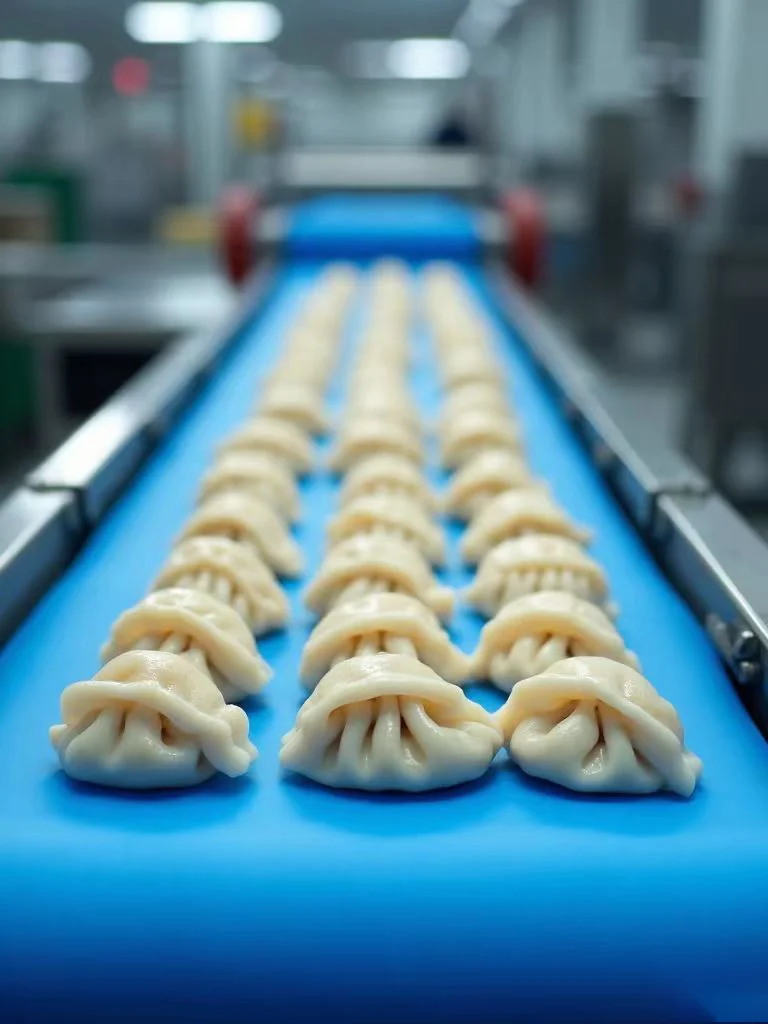
How to Balance Cost, Hygiene, and Durability in Belt Selection?
Price Now vs. Savings Later
A belt that costs 20% more but lasts twice as long is a bargain. The challenge is convincing people who only look at the price tag.
Lower Downtime and Repair Costs
Every time a belt fails, machines stop. That means wasted product and idle workers. Reliable belts keep the line running and reduce hidden costs.
Meeting Food Safety Standards
Bad belts can lead to contamination and even recalls. Belts that follow FDA, EU, and USDA rules avoid legal trouble and keep plants safe.
What Should Food Processors Consider Before Purchasing?
Type of Food on the Line
Different foods behave differently. Sticky dough, frozen seafood, or milk powder each need a special surface and belt thickness.
Cleaning Routine and Frequency
Plants with three daily washdowns need stronger belts. A factory that washes weekly may manage with a simpler option.
Custom Details Like Texture and Edge Sealing
Small details matter. A sealed edge stops water from soaking inside. Extra thickness can help with heavy loads. These small changes often decide whether a belt lasts years or fails in months.
Conclusion
Freezers and washdowns are the toughest tests for conveyor belts. Many belts cannot handle both. But with the right choice—PU smooth belts, fabric-top belts, or even homogeneous types—plants can run clean, safe, and efficient. UYANG BELTING offers products that meet these needs. Their belts are built to last longer, clean faster, and reduce downtime. In the end, that means smoother operations and fewer late-night repair calls.
FAQs
Q1: How long do freezer belts usually last?
A: It depends on how often they run and how often they are cleaned. In good conditions, belts may last two or three years. In harsher plants, they may need replacement after a year.
Q2: Are PU belts okay for direct contact with food?
A: Yes. PU belts are food-grade and safe for direct contact. They meet global food safety standards.
Q3: Can one belt work in both freezer and washdown zones?
A: Yes, if chosen well. A PU belt made for cold and cleaning can handle both without a problem.

